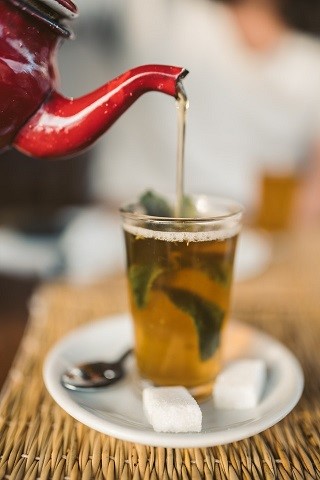Last Updated on December 29, 2021
International Tea Day is observed on December 15th in many countries in the East, in Africa and here in Israel too.

Tea is an aromatic beverage of great demand in the world market. Tea is a $38.8 billion industry worldwide and in 2020, global consumption of tea amounted to about 6.3 billion kilograms.
Tea is the second most consumed drink in the world, after water. Coffee is third, orange juice and beer follow and soft drinks come in at 6th place (1.7 billion servings of Coca Cola are drunk each day).
Indians, Britons and Chinese drink around 4 times more tea than Israelis. Israelis drink relatively little tea – around 200 cups per person/year. Turks apparently drink the most – 3.16kg of tea per person/per year.
Turkey grows one-fifth of the world’s supply of tea. Tea may have been born in China, but India is the other giant of production.
Types of teas
With so many kinds of tea available, you might be surprised to find out that there are only really five types of tea. Even the most exotic, exciting, or weird infusions are derived from these five basic teas.
- Black
- Green
- White
- Oolong
- Pu’er
What is a tea and what is a tisane?
Anything else among the many common tea flavors we consume, is a herbal or plant infusion. Amongst connoisseurs and foodies, these are called “tisanes”.
Some of the most popular teas and tisanes
- Darjeeling: Derivative of Black Tea with a light, nutty taste and a floral smell
- English Breakfast: Has a rich and hearty flavor and is enjoyed with milk and sugar (In Israel you’ll hear this referred to as ‘Tay Angli’)
- Matcha: Derivative of Green Tea, which is high in antioxidants and nutrients
- Chai: A milky, sugary, and spicy beverage originating from India and now popular in Israel
- Earl Grey: Made mostly with Black tea, Earl Grey has smoky, fragrant, and citrus tones
- Jasmine: Has a delicate aroma and a refreshing flavor
- Chamomile: Is known for its soothing properties
- Oolong: Falls between Green and Black Tea and is one of the top five true teas
- Yerba Mate: Includes high levels of caffeine and is often used as an alternative to coffee
- Rooibos: Originating from the South African Red-Bush tree, is light in flavor, with many health benefits
- Pu’er: Has earthy, mellow, and balanced undertones and has become popular over the last few years
- Lapsang Souchong: A black tea with a smoky aftertaste
- Mint: A favorite in Israel, helps to soothe upset stomachs
- Sencha: Most famous in Japan for its bitter taste
Tea in Israel
Wissotzky Tea (Hebrew: תה ויסוצקי) is one of the oldest tea companies in the world and is the leading tea distributor in Israel. Founded in 1849 in Moscow it became the largest tea firm in the Russian Empire and by the early 20th century, it was the largest tea manufacturer in the world.
Wissotzky’s sell around 55 different blends of teas and infusions and your can purchase some of their signature blends via their website or enjoy a cuppa at their Tea House in Tel Aviv.
World price of tea
As of November 2021, the world wholesale price of tea was $2.48/kg (or 7.70 NIS/kg). This is a far cry from the retail price. There is between 30g-40g of tea in a 20-tea-bag-box that retails for around 17NIS on Israel’s supermarket shelves which translates to 175NIS/kg.
How to make the perfect cup of tea?
So you think you make the best cup of tea on the planet? How do you do it? Do you use a tea-pot no matter what, or do you make your cuppa in the cup? Do you use loose tea leaves or only tea-bags? Do you care if the tea-bag has a string and a tag, or not? Do you drink your tea with milk or black; with lemon, with sugar or some other way? Does Israeli tea compare to your favourite brand from the old country; Lipton’s, Twining’s, Five Roses, Joko, Yorkshire, PG Tips, Ahmed, Barry’s Irish and others? Do you store your tea in a wooden tea-box, in a tea-tin in a bottle or just in the supermarket package?
As you can see, tea drinking is not as simple as it seems. It’s an art and steeped (no pun intended) in culture and tradition. However you enjoy it, now’s the time for a tea-break, but before you go, please tell us (in the comments section below) what your favourites are – blend and brand and where you’re buying them.


